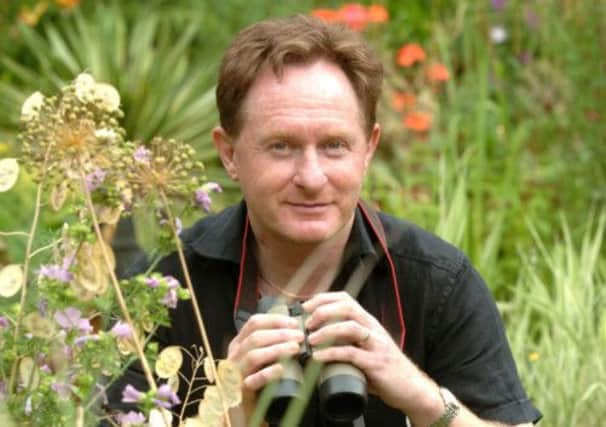Secrets of a wetland lost and forgotten


TO see the last remnant of the primeval fenland you have to travel south from Yorkshire. To Cambridgeshire in fact. There, in a small corner of the county best known today for its historic university, you can stand inside the dykes and banks of the Wicken Sedge Fen and take a step back in history.
It was where Hereward the Wake, the last Saxon warlord, gazed out over an English kingdom squeezed in the grasp of Norman steel and a culture battered and broken and it was one that looked very different to the one we know centuries on.
Advertisement
Hide AdAdvertisement
Hide AdThe view today is across a largely barren, dry vista of intensive agri-industry; devoid of its ecology and deprived of its native peoples. Yet history tells us that it wasn’t always this ways, this was once the richest landscape for people and for wildlife in Britain.


It’s hard to believed today and a little while ago I began to wonder where, when and why it had disappeared. I also wondered what this land had really looked like and exactly what was its ecology? These basic questions are hard to answer since there a few or no written records and most of this landscape was destroyed before anyone bothered to identify and catalogue its animals and plants.
What we do know is that much of the great wetland was still here in 1600, but virtually annihilated by 1900. The destruction was quick and stark in this county, as my friend Professor Chris Smout, Historiographer Royal for Scotland, once remarked, “it is surprising how Yorkshire fenlands have evaporated from general memory.”
Here, on my own doorstep we had one of the most extensive tracts of wetland in Britain. The wetlands of the Humber basin and the entire county of Yorkshire stretched from north Lincolnshire through the Vale of York, through South Yorkshire and Holderness, to Pickering and beyond.
Advertisement
Hide AdAdvertisement
Hide AdIt defined the landscape of this county, so what happened? Where did it go?
A clue as to what happened and why, is found in the old texts when the pioneering agricultural writer Arthur Young wrote of our region in 1772, “The soil of the isle of Axholm is among the finest in England; they have black sandy loams; they have warp lands; they have brown sands; and they have rich black loams, soapy and tenacious; the under stratum at Haxey, Belton etc. is, in many places, and imperfect plaster stone.”
For landowners, these regions of neither land nor water, needed taming and they realised that if they could be brought into production they could be immensely valuable. However, there is more, it was necessary to bring these ‘fenscapes’ under control because they bred dissent and unrest, fear and loathing.
These intractable wetlands were seen as monstrous places and a threat to health and sanity, to the clean and proper body, and mind. In 1629, William Lambarde urged the draining of the East Anglian Fens describing them as sunk in “water putred and muddy, yea full of loathsome vermin; the earth, spuing, unfast and boggie”. When the great playwright William Shakespeare was setting the scene for his tragedy King Lear he chose a place shrouded “fen-sucked fogs drawn by the powerful sun.”
Advertisement
Hide AdAdvertisement
Hide AdThese now forgotten fens were once seen as unsafe, evil wastes, where drowning was common, where the corrupted waters and foul air were poisonous and where travellers might be easily lost in their featureless expanses.
Other hazards included the potential flooding of cultivated land located in or around the fen, while malarial ague or swamp fever was believed to be carried in the bad air which emanated from the fens.
My research has taken me on a journey to discover how all these factors led to the loss and transformation of around 8,000 sq km of the once great fenlands of England.
The story of these lost fens is of perhaps the greatest single removal of ecology in our history. Indeed, so thoroughly has the process been undertaken, that most visitors to, and even many residents in, the areas concerned have little knowledge or vision of the landscape as was.
Advertisement
Hide AdAdvertisement
Hide AdFor many, the fenlands are the vast expansive flatlands of intensive farming, the ‘breadbaskets’ of Britain. The characteristic landscapes are now of tulip fields or of horticultural and market garden produce, but that is to ignore a large part of their history.
Gone are the vast flocks of wetland birds that once filled the evening skies in winter, the frozen wetlands and the fen skaters of the winter are but a footnote in history and the abundant black terns or breeding wading birds of the summer months just the faintest of memories. The transition is so complete as to be almost unnoticeable.
However, pause for a whole off the main roads and look at place names and road names; they have a story to tell.
Ferrymoor, Old Moor, Potteric Carr, Fenny Lane, The Withies, Commonside, Reed Holme, Fen Common, Turbary Lane, Wildmore, Adventurers’ Fen, Wicken Fen, Thorne Moors, Hatfield Chase, and many more. These tell of a landscape now gone but of huge importance even today.
Advertisement
Hide AdAdvertisement
Hide AdThe fenlands bred seeds of revolution and civil war paid the penalty for that. They nurtured religious non-conformism and had influence spanning both sides of the Atlantic, and ultimately around the world.
From Hereward against the Normans, to dissidents such as Bunting’ Beavers in the 20th century, who campaigned against peat extraction, locals have taken action against aggressive invaders. Fenscapes, neither water nor land but something in-between, bred independence and if necessary, dissention. The first Earth activists were in South Yorkshire.
The result of my research is a book and while it’s not a definitive account it touches on many aspects of this unique landscape. Drawing on literature over many centuries, the idea was to explore ideas and perceptions, histories and conflicts in this contested landscape.
There are two main regions that I call the Northern Fens of Yorkshire and north Lincolnshire, and the Southern or East Anglian Fens, of Cambridgeshire, Lincolnshire and Huntingdonshire. The two regions are distinct yet inter-twined with histories and ecologies are separate but inseparable.
Advertisement
Hide AdAdvertisement
Hide AdThese regions and their ecologies also have a deep human connection and in recent years, when I have given talks on ‘The Lost Fens’, the feedback has been fascinating. Family connections over the centuries spring from the audience.
John Millett from the York branch of the RSPB for example, sent me notes on how when his daughter was born in Spalding in 1970, natives were still known as Lincolnshire Yellow Bellys. This may be due to the yellow underside of the local frogs or the yellow pallor from the ‘ague’ before the wetlands were drained.
Another lady, Moira Walker contacted me with information about deep-rooted family connection to Thorne and sent a fascinating copy of an abstract of a will inventory for Thomas Brady, one of her ancestors. Dating from July 13, 1723, “one and a half acres of moor,” were mention has having particular value. Others have passed on information of how their great grandfathers always kept boats in which to get about in the regular floods which affected these areas. These personal accounts are so easily lost or forgotten, but give a real insight into the intimate relationships between people and their landscape.
However, alongside the individual and personal narratives the story is one of politically and economically driven ecological catastrophe and loss. So much has gone, but we do not even know fully what was there before. The changes have been seminal in defining the modern Fenland, but they run so deep, that little remains of what was there before.
Advertisement
Hide AdAdvertisement
Hide AdNow, in a world of global environmental change, and especially of climate change, we live in a period of uncertainty and of challenges, which only 10 years ago were unimaginable. It seems likely the fenlands will once again have a major role to play in our sustainable futures and if you find the right spot and listen carefully you might just hear the sound of Yorkshire’s bitterns, the ‘butter bumps’, booming again after a century’s absence.
Ian Rotherham, is a writer, broadcaster and Professor of environmental geography and reader in tourism and environmental change at Sheffield Hallam University.